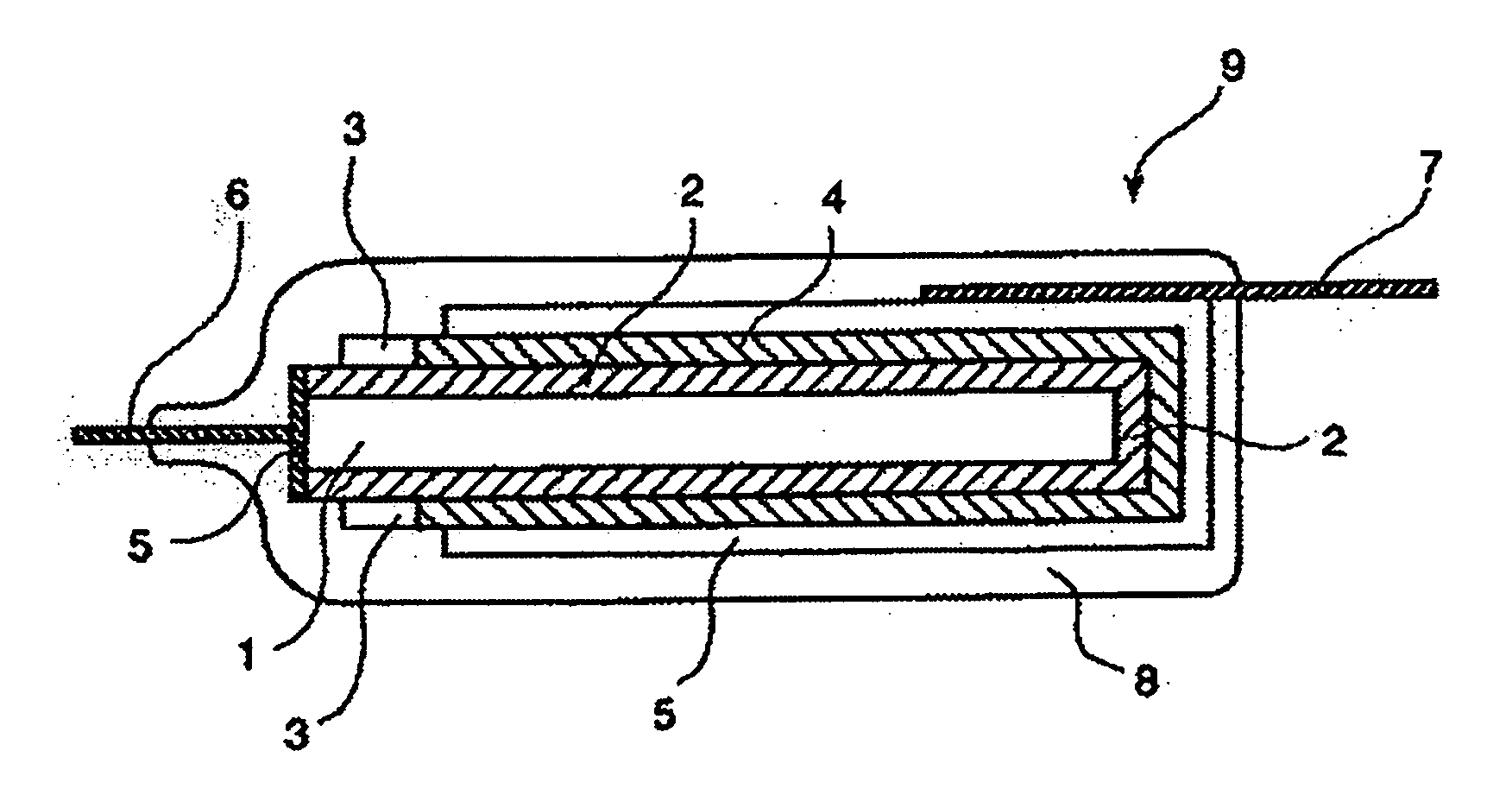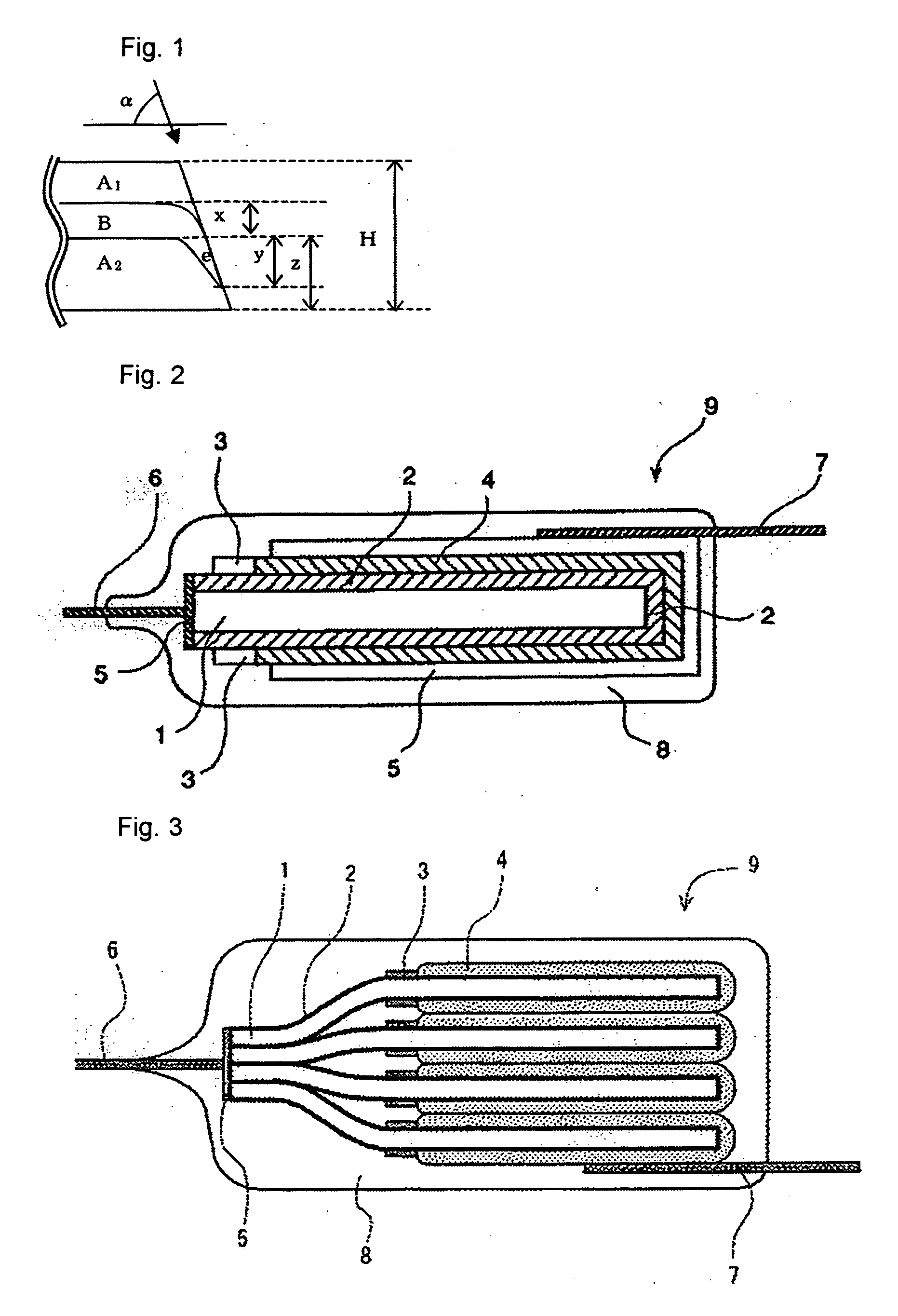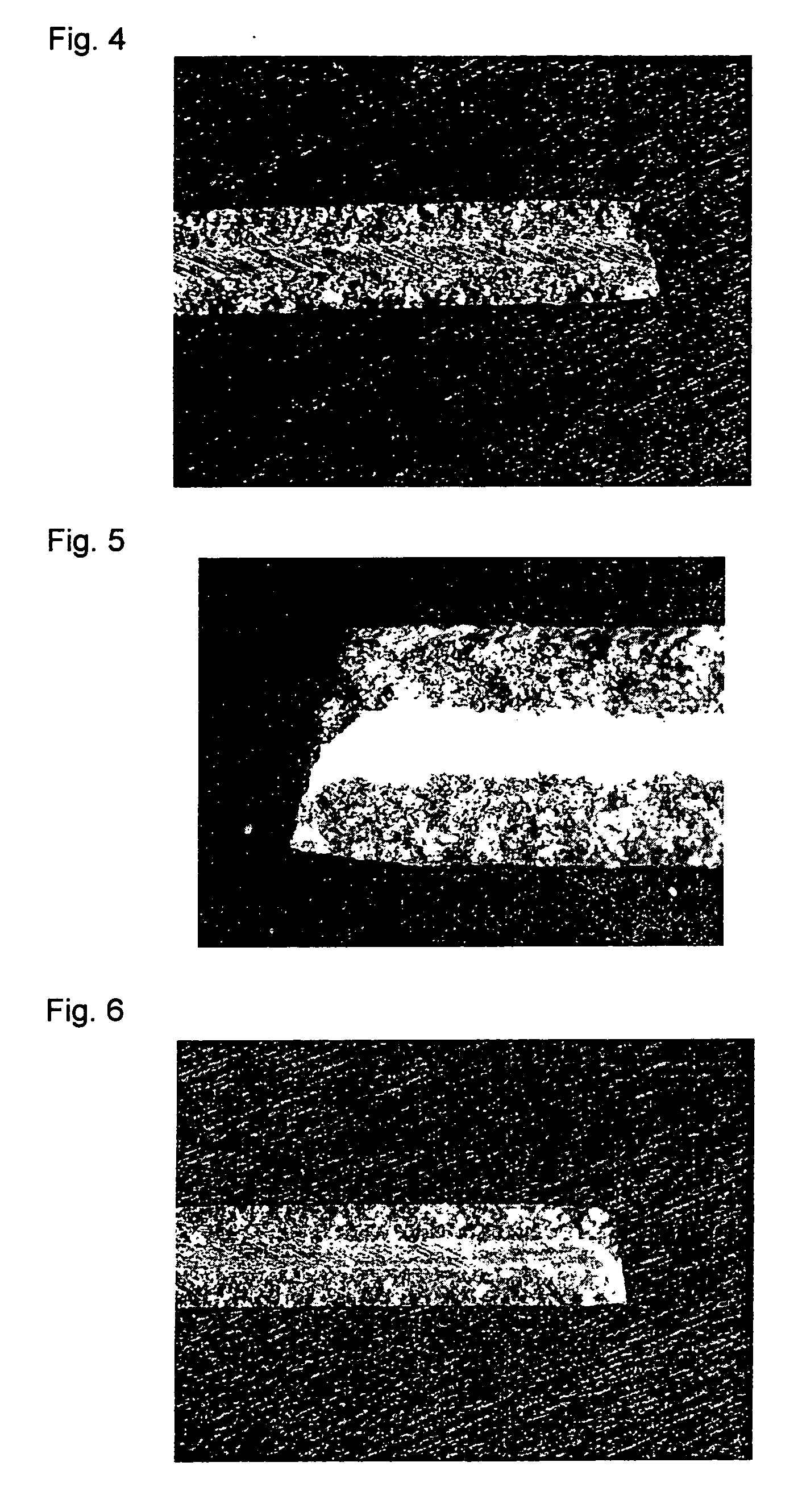Solid electrolytic capacitor
- Summary
- Abstract
- Description
- Claims
- Application Information
AI Technical Summary
Benefits of technology
Problems solved by technology
Method used
Image
Examples
example 1
[0172] A chemically formed aluminum foil in which x and y / z in FIG. 1 are respectively 30 μm and 0.3, a supplementary angle of cutting angle α (see FIG. 1) is 110°, the thickness as a whole (H) is 110 μm was used. Its enlarged cross-sectional photograph is shown in FIG. 4. Also, an enlarged photograph of the cut surface is shown in FIG. 10. The aluminum foil was cut into a size of 3 mm (short axis direction) ×10 mm (long axis direction), and a polyimide solution was circumferentially coated on both surfaces in a width of 1 mm to divide the surface into a 4-mm portion and a 5-mm portion in the long axis direction and then dried to provide a masking. A voltage of 4 V was applied to the 3 mm×4 mm portion of this chemically formed foil in a 10 mass % aqueous ammonium adipate solution to chemically form the cut end part and thereby produce a dielectric oxide film. Thereafter, this 3 mm×4 mm portion of the aluminum foil was dipped in a 2.0 mol / L isopropyl alcohol (IPA) solution having dis...
example 2
[0176] A chemically formed aluminum foil in which x and y / z in FIG. 1 are respectively 30 μm and 0.5, a supplementary angle of cutting angle α (see FIG. 1) is 110°, the thickness as a whole (H) is 110 μm was used. Its enlarged cross-sectional photograph is shown in FIG. 5. Except using this chemically formed aluminum foil, a solid electrolyte was formed in the same manner as in Example 1.
[0177] The film thickness at a corner part (the cut section at an inner angle of 110° between the edges) measured in the same manner as in Example 1 was 19 μm.
[0178] Thereafter, the re-chemical formation, the coating of a carbon paste and a silver paste, the stacking, the connection of a cathode lead terminal, the encapsulation with an epoxy resin, and the aging operation were performed in the same manner as in Example 1, and 30 units in total of capacitors were completed. The properties of the obtained laminated capacitor devices were evaluated in the same manner as in Example 1 and the results t...
example 3
[0179] A chemically formed aluminum foil in which x and y / z in FIG. 1 are respectively 30gm and 0.8, a supplementary angle of cutting angle α (see FIG. 1) is 1100, the thickness as a whole (H) is 110 μm was used. Its enlarged cross-sectional photograph is shown in FIG. 6. Except using this chemically formed aluminum foil, a solid electrolyte was formed in the same manner as in Example 1.
[0180] The film thickness at a corner part (the cut section at an inner angle of 110° between the edges) measured in the same manner as in Example 1 was 17 μm.
[0181] Thereafter, the re-chemical formation, the coating of a carbon paste and a silver paste, the stacking, the connection of a cathode lead terminal, the encapsulation with an epoxy resin, and the aging operation were performed in the same manner as in Example 1, and 30 units in total of capacitors were completed. The properties of the obtained laminated capacitor devices were evaluated in the same manner as in Example 1 and the results th...
PUM
| Property | Measurement | Unit |
|---|---|---|
| Angle | aaaaa | aaaaa |
| Angle | aaaaa | aaaaa |
| Angle | aaaaa | aaaaa |
Abstract
Description
Claims
Application Information
 Login to View More
Login to View More - R&D
- Intellectual Property
- Life Sciences
- Materials
- Tech Scout
- Unparalleled Data Quality
- Higher Quality Content
- 60% Fewer Hallucinations
Browse by: Latest US Patents, China's latest patents, Technical Efficacy Thesaurus, Application Domain, Technology Topic, Popular Technical Reports.
© 2025 PatSnap. All rights reserved.Legal|Privacy policy|Modern Slavery Act Transparency Statement|Sitemap|About US| Contact US: help@patsnap.com



